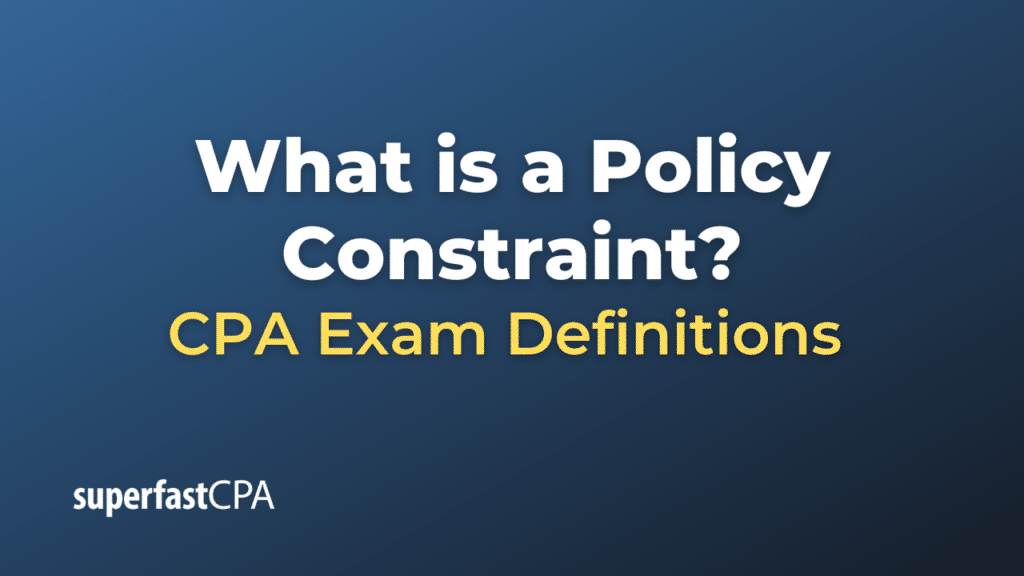Policy Constraint
A policy constraint, in the context of business and management, refers to a limitation or restriction set by a company’s internal rules, guidelines, or policies. These constraints can impact decision-making and strategic planning, and they can originate from various company policies, including operational policies, financial policies, human resource policies, and more.
For example, a company might have a policy that it will not engage in any business practices that harm the environment. This policy would act as a constraint on the business operations, limiting the company’s options in terms of the materials it could use, the processes it could adopt, and the partners it could work with.
Another example could be a financial policy that caps the level of debt a company can take on. This policy would act as a constraint on the company’s financial decisions, limiting the size of the loans it could take out or the bonds it could issue.
Policy constraints serve a critical role in defining the scope and direction of a company’s operations. They align the activities of various departments towards the company’s mission, vision, and core values, and they help manage risks and ensure compliance with laws and regulations.
Example of a Policy Constraint
Let’s consider a hypothetical tech company, TechX, which has a policy constraint that restricts it from using suppliers who violate human rights, such as employing child labor or maintaining unsafe working conditions. This policy aligns with TechX’s commitment to social responsibility.
Now, suppose TechX is looking to manufacture a new line of smartphones and is trying to identify suitable suppliers for components. TechX discovers that the most cost-effective supplier for certain critical components, SupplierY, has been reported to violate human rights in its factories overseas.
Despite the cost advantage that SupplierY offers, TechX’s policy constraint regarding human rights forces it to rule out SupplierY as a potential supplier. Instead, TechX needs to choose a supplier that may be more expensive but complies with its human rights policy.
As a result, TechX’s policy constraint guides its decision-making process, ensuring alignment with its ethical stance, even if it potentially increases costs. This example illustrates how policy constraints can influence a company’s strategic and operational decisions.














